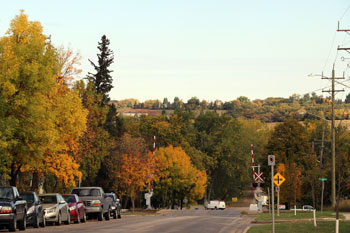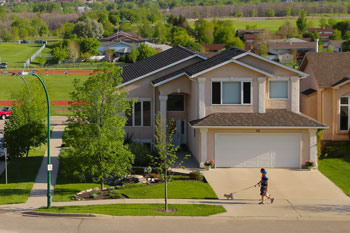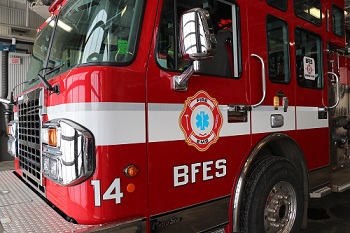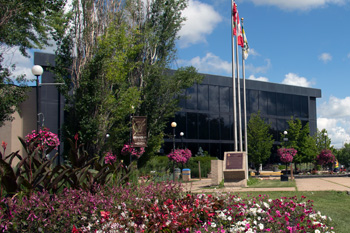FAQ: Borrowing For The Southwest Brandon Wastewater Servicing Project and Proposed Increase In Water and Wastewater Utility Rates
September 12, 2022
Brandon, MB – The City of Brandon is releasing Frequently Asked Questions (FAQs) regarding two important initiatives:
- borrowing for a large municipal infrastructure project in the southwest area of the city, known as the Southwest Brandon Wastewater Servicing Project; and,
- proposed increase in water and wastewater utility rates
These FAQs will be posted on brandon.ca and the City’s social media sites.
FREQUENTLY ASKED QUESTIONS FOR BORROWING FOR LARGE MUNICIPAL INFRASTRUCTURE: SOUTHWEST BRANDON WASTEWATER SERVICING PROJECT
Overview of the Southwest Brandon Wastewater Servicing Project
The City of Brandon has determined the southwest area will be a focus for residential and commercial growth. New wastewater infrastructure is required to support continued development.
The existing area wastewater network is nearing capacity. Lift station(s) are required to direct wastewater to the nearest acceptable location and must overcome topographical (hills and rises) challenges within the desired service area. Detailed information regarding this project can be found on brandon.ca.
What is the problem?
The City has a limited supply of serviceable land to accommodate new homes or commercial growth. In order to continue to grow in new areas, major upgrades to our infrastructure networks (including water and wastewater) are required. The next phase of development in the southwest area requires a $30 million wastewater servicing project, which includes $20 million for phase I of the project and a further $10 million for phase II.
Why is borrowing the preferred solution?
Borrowing is required to fund the construction of new water and wastewater infrastructure in a timely manner that aligns with the need for new homes and commercial properties. Municipalities typically borrow funds for infrastructure of this magnitude. Saving, instead of borrowing, would result in significant delays in building new homes and commercial properties.
Why should the City fund infrastructure to grow in new areas?
Throughout the years, major infrastructure for all homes and businesses has been built by the City. Investing in new growth areas provides increased housing options (rental and ownership), impacts housing prices, increases tax revenue for the City to provide other services, and provides new commercial and employment options.
How is infrastructure growth funded in new areas?
Developers are responsible for funding and constructing all of the infrastructure needed to service growth within their development areas (e.g., roads, pipes, sidewalks, trees, and parks). The City of Brandon, like most municipal governments, funds and constructs large growth infrastructure projects, such as the southwest wastewater servicing project, required to provide services to the new growth areas.
How do developers contribute to growth infrastructure?
The City has adopted a development charge program to recover the costs of growth infrastructure from developers and builders of new growth areas. The City has four separate development charge streams for the water and wastewater utility, with one of those dedicated to wastewater collection.
The City is forecasting to receive $4.1 million in wastewater collection development charges revenue over the next ten years, which could be used to help pay for the borrowing costs of the wastewater project in question. As a normal part of business, the City is in the process of reviewing its development charges with the goal of aligning rates with the updated costs of development infrastructure.
How will the Southwest Brandon Wastewater Servicing Project impact ratepayers?
As part of the current rate review, only 5% of the rate increase is due to the debt payments for all wastewater projects, including the $20 million required for phase I of the Southwest Brandon Wastewater Servicing Project. Note that the remaining $10 million for phase II is not included in the City’s rate review as the timing and funding of that project is undetermined.
How has the City considered government grants?
Applying for grants is an important priority for the City. Of the $189.6 million of infrastructure projects within the water and wastewater utility budgets (2023-2027), 49.5% of that amount includes secured funding from Provincial and Federal grants. The southwest wastewater servicing project is not eligible for current grant programs.
FREQUENTLY ASKED QUESTIONS FOR PROPOSED INCREASE IN WATER AND WASTEWATER UTILITY RATES
Overview of the Proposed Increase in Water and Wastewater Utility Rates
Water and wastewater utility operations consists of water treatment, water distribution, wastewater collection, and wastewater treatment. This utility must be self-funded and is separate from property taxes. More information can be found at brandon.ca/proposed-rates.
How much and when are water and wastewater rates going up? How can I control them?
For a "typical household family of four", using 184 cubic meters per year, the utility invoice would be increasing from the current rate of $675 per year to $836 in 2023, $960 in 2024, $1,085 in 2025, and $1,211 in 2026. Current rates have been in place since 2018.
Property owners concerned about increases to their utility invoice are reminded that they control how much water their househo







